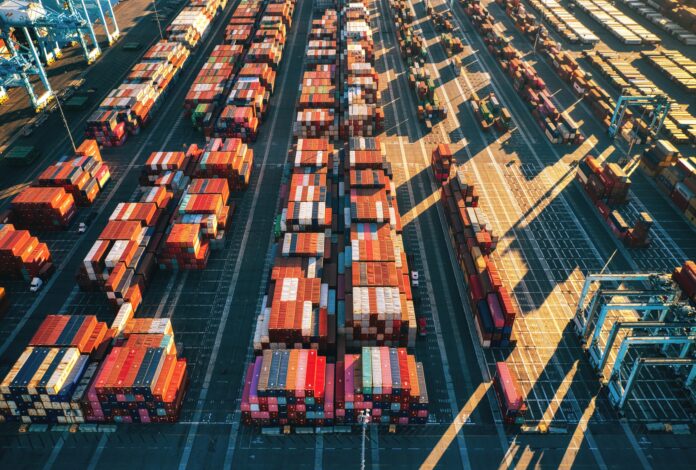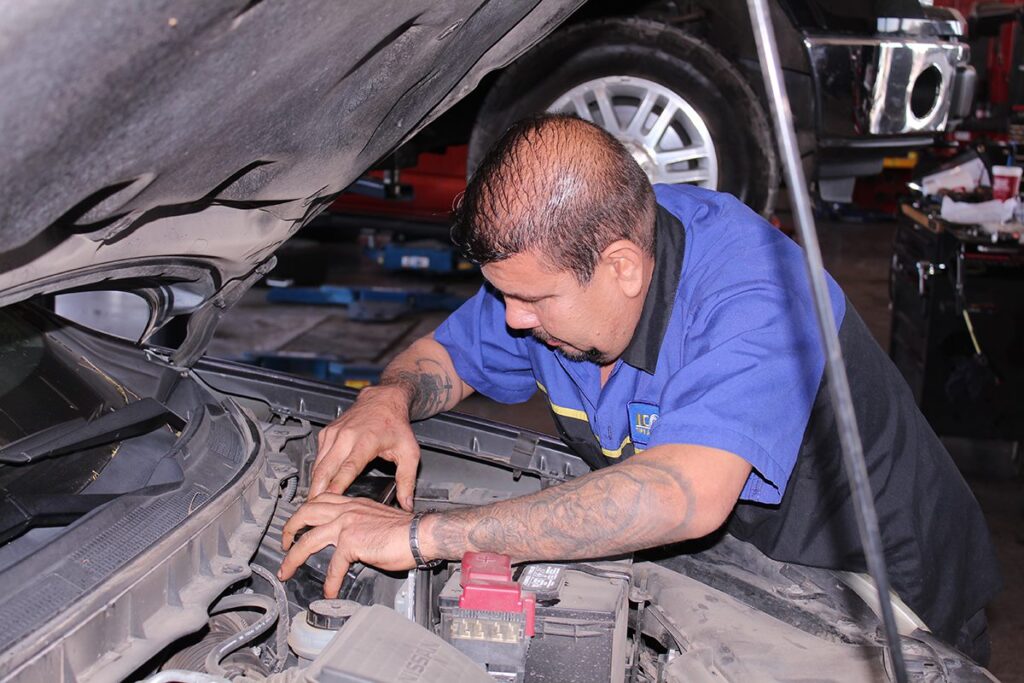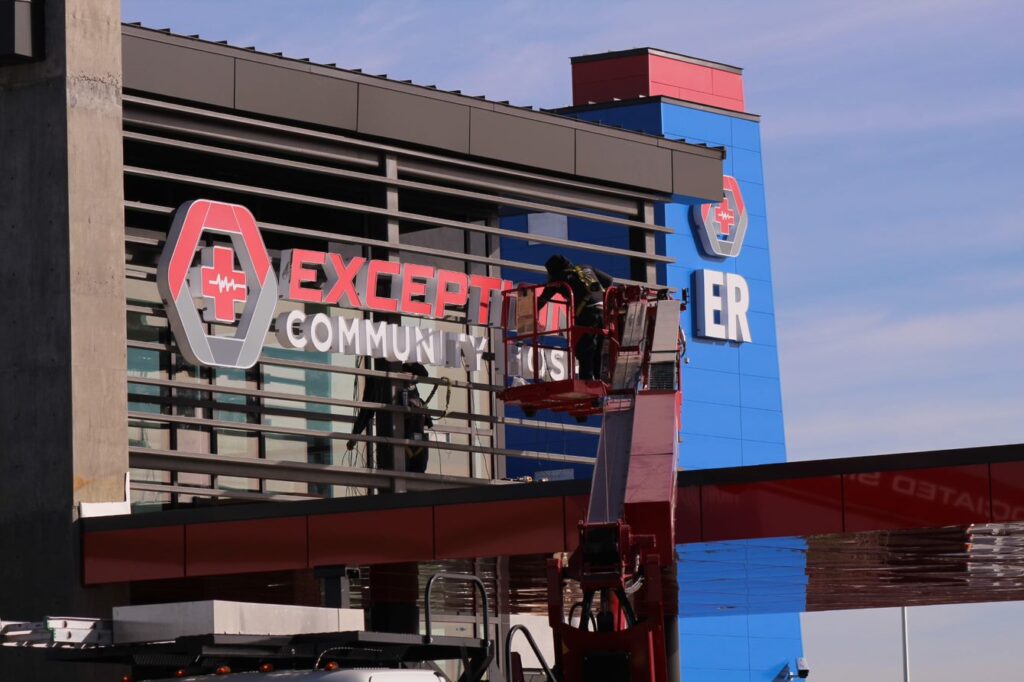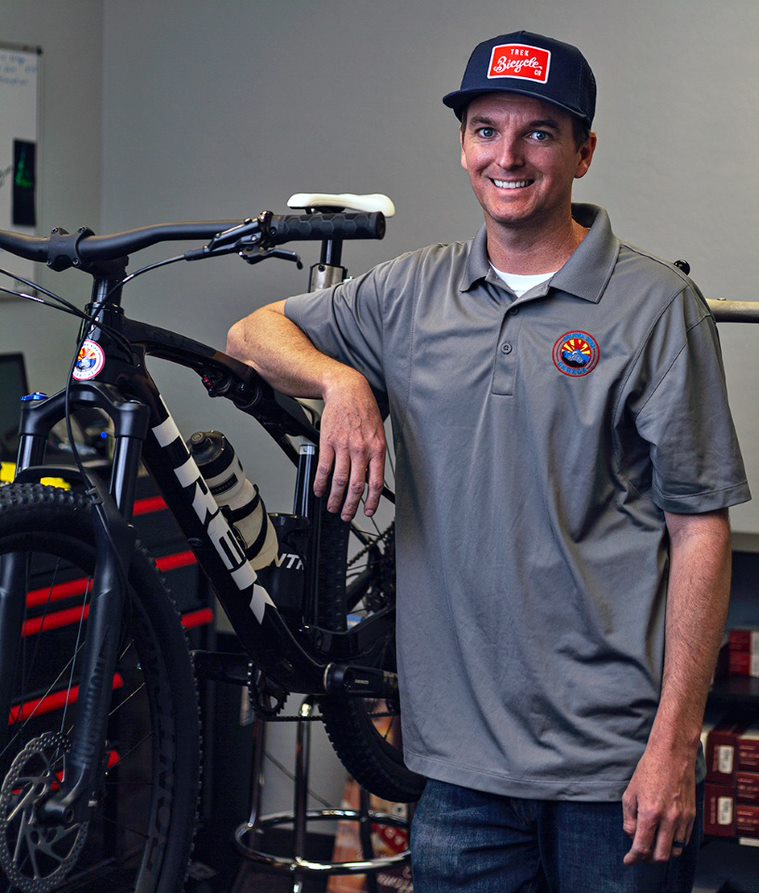
The COVID-caused crisis is shorting the availability of many consumer goods and hampering construction projects. Here’s what’s happening and who it’s impacting here in the city.
The Problem
The great supply chain disruption of 2021 is making it harder for consumers to buy all sorts of products and goods, from video game consoles, winter coats and toys for the kids to construction supplies, tires and Christmas decorations. It started with the onset of the pandemic a year earlier with shortages in specific industries — semiconductors, for example — and panic buying of toilet paper, disinfecting wipes and other household products.
With people unable to leave their homes, spending moved from services to goods. Using stimulus checks and money saved from canceling vacation plans, people bought new furniture or TVs, added home offices, renovated kitchens, and purchased exercise or recreation equipment. With the spread of the delta variant, much of that spending never swung back toward services this year as expected. In fact, people are buying more stuff than ever before. And now, of course, we are approaching the holiday season.
That consumption binge is simply overwhelming the physical and logistical limits of the vast global infrastructure that moves consumer goods from factories to bricks-and-mortar and online stores. There’s just too much imported stuff trying to move through that network of transport and warehousing.
“We’ve spent decades optimizing supply chains to carry a very specific amount of cargo during very specific times of the year across very specific modes of transportation,” Nathan Strang, an expert on ocean trade logistics at the supply chain tech and consulting firm Flexport, told Slate.com in October. “As soon as we exceeded the design capacity of those systems, it broke.”
With the scarcity of goods, prices have risen — dramatically in some cases.
The Local Impact
ICONIC TIRE
Jeremy Darrow spends 10-12 hours a week just searching for enough tires to put on his customers’ vehicles.
Pre-pandemic, tires were ordered, delivered and ready for installation without too much effort.
But now there’s a shortage of tires coming from China and other overseas locations due to COVID-related factory shutdowns and supply chain issues, including tires that are “sitting on the water” and in containers that can’t get unloaded, he said.
“It’s a necessity,” said Darrow, area supervisor for Iconic Tire, which operates tire and service centers in Maricopa and four other regional locations. “If the customer needs a tire today, I’m going to do everything I can to get that tire today.”
The fill rate on orders from some tire manufacturers was 15%-20%, and that was considered good, he said.
“It has been a very big game of chess to make sure that we keep product on the shelves and in our warehouse to be able to take care of our customers,” he said. “I’m checking with Goodyear every single day to find out if my local distribution center doesn’t have it, then if I can get it shipped in from California or Texas, or wherever there is availability.”
The Goodyear dealer increased its prospects recently by taking on a full line of Yokohama tires made in the United States.

That has helped Darrow in his effort to meet the goal of 400-600 tires in stock at each location.
Ironically, the pandemic has been good for business at Iconic. From the early days, when people were home, they were getting new tires and repairs on their vehicles, said Darrow. He figures customers wanted to be road-ready when they could go back to work or travel. That demand has continued straight through 2021.
Sourcing auto parts has also been a challenge — to a lesser degree — met by buying from a wider group of distributors and using more-expensive original equipment from dealers instead of original equipment-equivalent parts, which are in short supply, he said.
Aftermarket companies that two years ago had stocked 10 types of brake pads for the same Honda Civic are down to two or three options.
Darrow said he began to see signs of the supply chain disruption intensifying at the beginning of the year, and then it got bad in mid-year.
“There’s a lot of talk that it may not get better till the first or second quarter of 2022,” he said.
EXCEPTIONAL COMMUNITY HOSPITAL
For a city in the midst of a huge residential and commercial growth spurt, it’s not surprising that one of the most significant impacts of the pandemic has been a shortage of construction materials and equipment.
The opening of the new La Quinta hotel at Copper Sky was delayed for months as the general contractor waited for supplies to be delivered.
And now the company building one of the most anticipated new projects, the city’s first hospital, is battling a recent shortage of supplies as it seeks to open on time this month.

“Fortunately, we were prepared and made adjustments and substitutions to ensure that the hospital and ER will open as soon as possible — before the end of the year,” he continued.
“Beyond supplies, the availability of workers has also slowed progress. We know the community of Maricopa desperately needs medical services and are all working with focused dedication and excited anticipation as we move toward the opening of our new Exceptional Community Hospital.”
ARIZONA BIKE GARAGE
How do you open a bike shop with hardly any bikes to sell?
Matt Stewart found out last year when he opened Arizona Bike Garage, the first bike shop in Maricopa, during the pandemic.
COVID was going strong in late summer 2020, six months after the onset of the virus in the United States. As people were cooped up at home with gyms closed, U.S. sales of bikes soared as much as 120% over the previous year as families pedaled in the fresh air to get recreation and exercise.
With many Asian factories closed early on, the virus was already impacting the availability of products, including imported bicycles, about 90 percent of which are manufactured in China, and bicycle parts — high-end gears and brakes, specifically — much of which are manufactured by Shimano in Japan, according to a Forbes report.
Stewart opened his store amid this backdrop, which meant the bit of stock he did have was very expensive bikes, which he could still obtain.

But the pandemic also hit hard at the core of his business, bicycle repairs, with parts difficult to procure.
More than a year later, with demand for bicycles back to regular levels, Stewart has the bikes. Months and months after he initially put in orders, they arrived. He had at least 60 bikes — 90% of them priced at $800 or less — in stock in early October. To ensure he can get parts, he has expanded his roster of distributors.
“For the most part we’re able to get everything we need just through having five distributors instead of one,” he said.
Repairs, he said, kept his business afloat last year. He has added hundreds more products on his website to help offset the slow summer months, when it is too hot in Arizona for most people to be thinking about their bikes. Selling more merchandise to a national audience would help even out revenue flow through the year, he said.
WALMART
Walmart, the largest retailer in Maricopa and the world, addressed supply chain problems in an Oct. 8 press release by Joe Metzger, executive vice president of supply chain operations for Walmart U.S.
“We have all seen and heard a lot in recent months about supply chain issues across the retail industry,” he wrote. “With so many news stories about port delays, increased consumer demand and holiday season forecasting, it’s natural to wonder whether items will make it to store shelves and how this might affect holiday preparations.”
According to Metzger, the multinational retailer has taken steps to navigate the hurdles and minimize disruption to ensure it can satisfy customers this holiday season.
“We’ve worked with suppliers to source holiday merchandise earlier than usual and are finding ways to move those products inside our supply chain network as quickly as possible,” Metzger wrote. “We have been laser-focused on inventory levels since the start of the pandemic and reported higher inventory in the second quarter this year than a year ago. While we’d like to see inventory levels continue to improve, we’re on the right track.”
Among the actions identified by Metzger to ensure shoppers can find what they are looking for, Walmart:
- Has chartered ships, diverted shipments through less congested ports and rerouted inland shipments, utilizing less conventional transportation methods to avoid rail delays
- Has hired more than 3,000 drivers this year, with more in the pipeline
Is hiring 20,000 permanent supply chain positions to help move products through facilities as quickly as possible - Has added storage capacity in fulfillment and distribution network through new facilities.
Those efforts by Walmart and other large retailers, who are spending millions to charter ships and planes to move merchandise, are serving to crush small retailers and manufacturers at this critical time of the year, according to a Nov. 7 report in the New York Times.
“Independent shop owners, who have no such recourse, say they’re often the last in line for products because manufacturers prioritize larger, more lucrative contracts,” the story said.
WHEN WILL IT END?
The consensus: supply chain problems will last through Christmas and well into next year.
Many economic experts, including Federal Reserve chairman Jerome Powell and Treasury Secretary Janet Yellin, see the effects lasting through mid-2022.
Heather Mason, president of the National Bicycle Retailers Association, a U.S. trade group, told Quartz.com that her industry looks to be dealing with the effects into 2023.
In October, the Conference Board Consumer Confidence Index increased, reversing declines in the previous three months. It shows more consumers are planning to buy homes, cars and big appliances. Nearly half of respondents said they are planning to take a vacation within the next six months.
According to Deloitte Insights, consumer spending was on track to rise 8.1% this year and forecast to grow 3% in 2022. Its economists project that spending on goods and services will both return to pre-pandemic levels by the end of next year, which could ease the logistical logjam.
But until Americans’ appetite for consumption lets up, shortages and price increases will likely continue.
This story was first published in the December edition of InMaricopa magazine.





![Maricopa’s ‘TikTok Rizz Party,’ explained One of several flyers for a "TikTok rizz party" is taped to a door in the Maricopa Business Center along Honeycutt Road on April 23, 2024. [Monica D. Spencer]](https://www.inmaricopa.com/wp-content/uploads/2024/04/spencer-042324-tiktok-rizz-party-flyer-web-218x150.jpg)






![Alleged car thief released without charges Phoenix police stop a stolen vehicle on April 20, 2024. [Facebook]](https://www.inmaricopa.com/wp-content/uploads/2024/04/IMG_5040-218x150.jpg)




